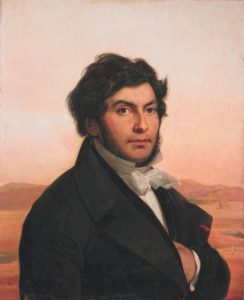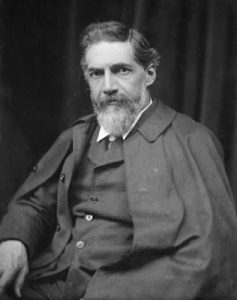Five important early Egyptologists
Five important early Egyptologists
Five important early Egyptologists
-
Hannah
-
Hannah

The discovery of the Rosetta Stone in 1799 (by French soldiers in Egypt for Napoleon’s campaign of 1798–1801) marks the beginning of modern Egyptology. The stone, recording a decree issued in Memphis, Egypt, in 196 BC, was translated by Jean-François Champollion, who became ‘the Father of Egyptology’.
We have Champollion, his contemporaries and those who came soon after to thank for laying the foundations for all the knowledge we have of this ancient civilisation today.
Jean-François Champollion (1790–1832)
Swept up in the ‘Egyptomania’ awakened by Napoleon’s time in Egypt, Champollion was fascinated by the Rosetta Stone, and he devoted himself to decoding it. In 1822 he had his breakthrough, discovering the key that would unlock Ancient Egyptian hieroglyphs.

Jean-François Champollion (source)
Following this pivotal discovery, Champollion travelled to Egypt to survey monuments and collect inscriptions to decipher, and his books Egyptian Grammar and the Egyptian Dictionary, posthumously published, were hugely influential.
Karl Lepsius (1810–84)
German Egyptologist Lepsius collected more than 15,000 artefacts during his trips to Egypt, and he used Champollion’s Egyptian Grammar to decipher the hieroglyphs. His work Denkmäler aus Aegypten und Aethiopien (Monuments from Egypt and Ethiopia), based on the Prussian scientific expedition he led in the early 1840s, provided a detailed description of many Ancient Egyptian sites and artefacts. To this day the work is important, for it tells us about monuments that have deteriorated since.

Karl Lepsius (source)
Lepsius was the keeper of the Egyptian collection at the Berlin Museum. Today you can still see many artefacts there, including the famous bust of Nefertiti.
Amelia Edwards (1831–92)
Following a trip to Egypt, Amelia, a writer, recounted her impressions in her book A Thousand Miles up the Nile (1877). Along with evocative descriptions, the book included Amelia’s amazing illustrations of important sites. The book was a bestseller and made a profound difference to how people viewed Egypt, sparking interest in Egyptology.

Amelia Edwards (source)
Amelia founded the Egypt Excavation Fund, which would conduct new excavations and record finds; she contributed hundreds of articles on Egypt to publications; and she gave a lecture tour. Upon her death, she left all the Egyptian antiquities she had collected, her library and her photographs to University College London, and she bequeathed the university the funds to establish the first British professorship in Egyptology. The first professor was Flinders Petrie.
WM Flinders Petrie (1853–1942)
Petrie’s first foray into Egyptology was an exciting one: he measured the Great Pyramid of Giza. Over his 70-year archaeology career, he directed various excavations, collecting not only ‘treasure’ but more mundane items, like pottery shards. He gave his collection to University College London, and a museum was created in his honour: the Petrie Museum of Egyptian Archaeology.

Flinders Petrie (source)
During his teaching career, Petrie trained many archaeologists, including one Howard Carter.
Howard Carter (1874–1939)
Carter is remembered for making the most amazing discovery: the tomb of Tutankhamun. This was a huge breakthrough in Egyptology. Carter, funded by his benefactor Lord Carnarvon, had been searching for this missing tomb in the Valley of the Kings for years, and in 1922 he found it. What he and Carnarvon saw when they entered the tomb was mind-blowing: gold everywhere, in shrines, in jewellery, in the sarcophagus and in the death mask of the ancient king.

Howard Carter (source)
For the rest of his life, Carter recorded and analysed artefacts from the tomb, and he too was involved in lecture tours: imagine how people flocked to hear him speak of the treasures of the tomb.
Egypt is very prominent in my family. My son, an elementary school teacher, studied hieroglyphics when he was in high school. One of my granddaughters loves everything to do with Tutankhamen. She was able to see the King Tut traveling exhibition in Dallas. She has a costume of Tut and toys and reads everything about him.
I’ve been in Hurghada and another port to watch the ships loading to take pilgrims to the Hadj. I had a cartouche made with her name in hieroglyphics for my daughter, the mother of the Tut fan,
How wonderful. Perhaps one day your family will be able to visit Egypt, and see the tombs, the Pyramids and the museum devoted to Ancient Egypt.